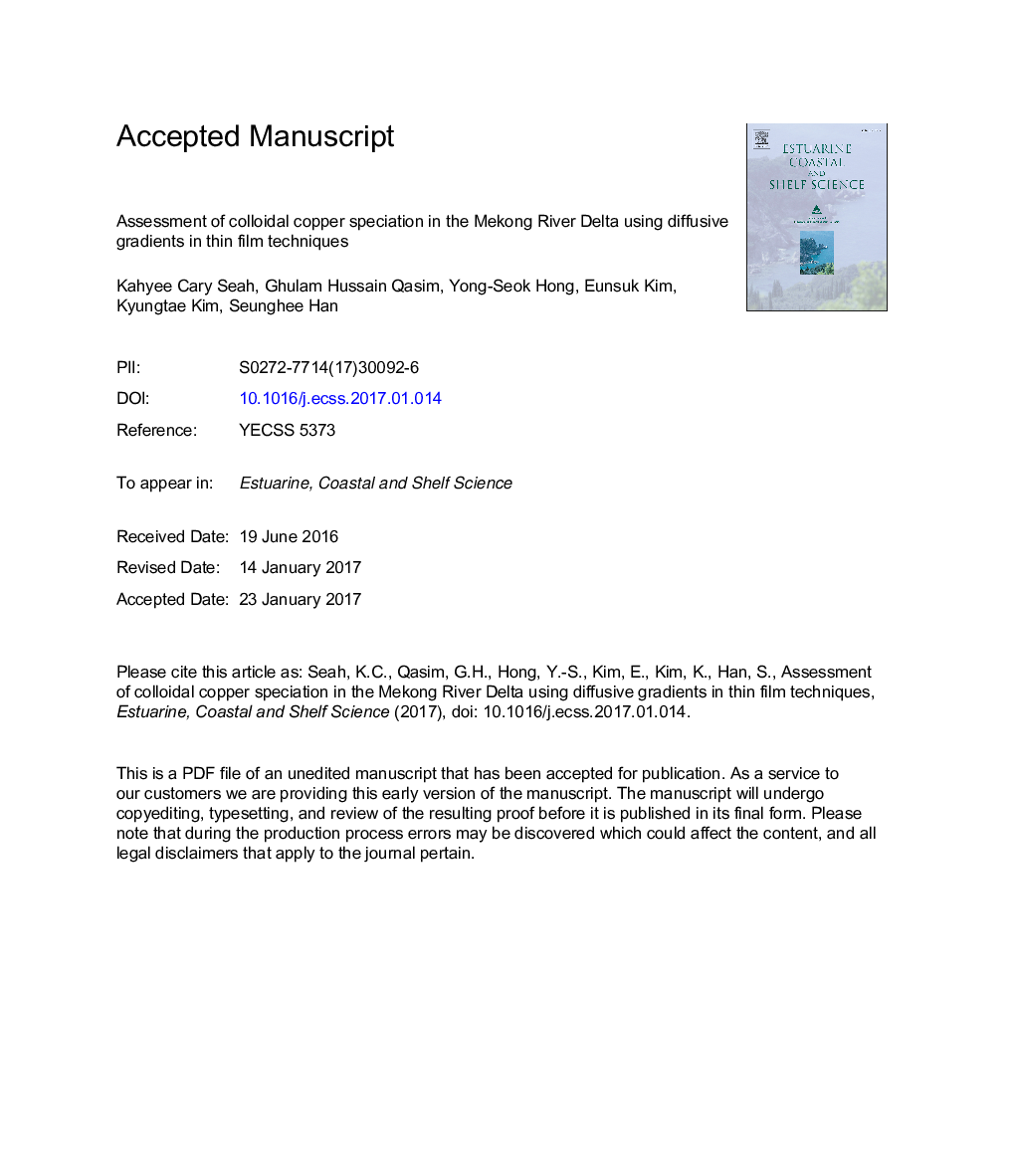| Article ID | Journal | Published Year | Pages | File Type |
|---|---|---|---|---|
| 5765356 | Estuarine, Coastal and Shelf Science | 2017 | 33 Pages |
Abstract
Colloidal Cu speciation along the salinity gradient in the Mekong River Delta was investigated using diffusive gradients in thin films (DGT) probes equipped with diffusive layers that had nominal pore sizes of 390 nm (DGT390) and 45 nm (DGT45). An open pore gel made of 1.5% agarose was used for the 390 nm pore size cutoff, and a restricted gel made of 40% acrylamide monomer was used for the 45 nm cutoff. When DGT390 and DGT45 were deployed in a 0.01 M NaNO3 solution for up to four days, the mean ratio of Cu accumulated in DGT390 to dissolved Cu (dCu) (<0.45 μm) was 1.0, and Cu accumulated in DGT45 to dCu was 0.98. By contrast, when DGT390 and DGT45 probes were deployed in Mekong River water of salinity 0, the ratio increased with increasing deployment time, from 0.15 to 1.0 for DGT390 and from 0.02 to 0.52 for DGT45, for four days. This demonstrates that the slow dissociation of colloidal Cu complex confines the rapid accumulation of colloidal Cu in DGT45, implying the potential of DGT probes for colloidal Cu monitoring. The same DGT probes were deployed in the Mekong River in order to test its in situ applicability. The colloidal fraction, determined by the difference between dCu and Cu accumulated in DGT45, ranged from 67% to 77% of dCu at the low-salinity sites but from 8.7% to 9.1% of dCu at the brackish sites. A large amount of particle suspension typically found at the salinity front of the Mekong River seemed to play a critical role in the transport of Cu by providing dCu and organic colloids from suspended sediment. Based on our test results, employing DGT probes is likely a promising method for monitoring colloidal Cu in natural water.
Related Topics
Physical Sciences and Engineering
Earth and Planetary Sciences
Geology
Authors
Kahyee Cary Seah, Ghulam Hussain Qasim, Yong Seok Hong, Eunsuk Kim, Kyung Tae Kim, Seunghee Han,
